Bloggfærslur mánaðarins, maí 2019
8.5.2019 | 07:56
Ragnar Hólm sýnir nýjar vatnslitamyndir í Mjólkurbúðinni

Ragnar Hólm sýnir nýjar vatnslitamyndir í Mjólkurbúðinni á Akureyri 11.-19. maí. Opið frá kl. 14-17 um helgar og eftir samkomulagi. Pálmi Gunnarsson, Einar Scheving og Phil Doyle djassa við opnun laugardaginn 11. maí. Allir ævinlega velkomnir.
https://www.facebook.com/events/406428106606928/
8.5.2019 | 07:52
Gilfélagið leitar af þeim sem var hafnað!
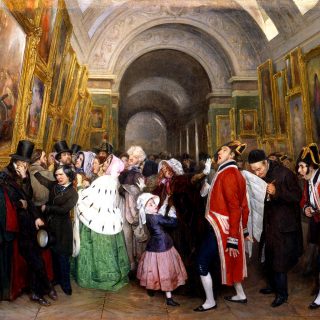
Gilfélagið stendur fyrir samsýningunni „Salon des Refusés“ í Deiglunni. Þeim sem var hafnað. Sýningin opnar samsíða sýningunni Vor á Listasafninu á Akureyri laugardaginn 18. maí, þar sem dómnefnd hefur valið inn verk og listamenn tengdum Akureyri og nærsveitum.
Skráning fer fram hjá Gilfélaginu á: gilfelag@listagil.is til 13. maí. Afhending verka er fyrir 15. maí. Öllum er velkomið að taka þátt hvort sem þeim var hafnað af dómnefnd, skipulagsleysi eða innri gagnrýnanda.
Sýningin endurspeglar hvað listamenn tengdir Norðurlandi eru að fást við þessa stundina.
3.5.2019 | 17:46
Fixed Points í Verksmiðjunni á Hjalteyri

Verksmiðjan á Hjalteyri býður yður að vera við opnun sýningarinnar “Fixed Points” 4 maí kl. 14:00.
------------------------------------------------------------------
Verksmiðjan in Hjalteyri cordially invites you to the exhibition opening "Fixed Points” 4th of May at 2 pm.
Listamenn/Artistes: Helene Garberg, Kah Bee Chow, Bjarni Þór Pétursson, Þorbjörg Jónsdóttir.
Sýningarstjórar/Curators: Bjarni Þór Pétursson, Gústav Geir Bollason
Texti/Text: Shauna Laurel Jones
Fixed Points sýnir hreyfimyndir sem sökkva sér í goðafræði og draumaveröld náttúrulegra svæða. Myndað er á mörgum stöðum svo sem eins og Yucatán í Mexíkó og Amasón héraðið í Kólumbíu, þar sem listamennirnir skoða og rannsaka sérkenni, sögu og andrúmsloft viðfangsefnis og staða.
Sýningin opnar laugardaginn 4 maí og stendur til og með 9 júní.
Far away and yet closer than ever, four artists sought to weave a translucent veil separating our world from another. Together, the film and video imagery by Bjarni Þór Pétursson, Helene Garberg, Kah Bee Chow, and Þorbjörg Jónsdóttir suggests a place in which matter is secondary to myth, where transformation and rematerialization happen regularly as a matter of course.
The exhibition opens on Saturday 04.05 and ends on Sunday 09.06 .
“Beyond seven mountains, beyond seven forests…” Thus begins a typical fairytale in Poland. In Korea, the tone is set with “Once, in the old days, when tigers smoked…”i And in the far north of Iceland, here in Hjalteyri, the tale might start with the invocation, “Far away and yet closer than ever, when you open your eyes by closing them tight…”
The Four Artists and the Veil
Far away and yet closer than ever, four artists sought to weave, collectively, a translucent veil separating one realm from another. On one side of this thin gauze was our world as we live it, and on the other side, the world they knew: a place in which matter is secondary to myth, where transformation and rematerialization happen regularly as a matter of course.
It was a place where Don William—the indigenous shaman Þorbjörg Jónsdóttir met in the Colombian Amazon—might have explained why “a man is like a tree,” but he could equally have said, “A man is a tree.” For a person can become a tree, in the four artists’ world, simply by feeling the sap coursing through her veins and allowing her branches to stretch ever so slowly heavenwards.
It was also a place where Nature had strong feelings, too, about her form. The land’s idea of its own shape was important, so important it could overpower the other ideas and (market) forces trying to reshape it. Seen from above, the contours of Malaysia’s Penang Island resemble a turtle, and the turtle is auspicious, Kah Bee Chow remembers a teacher once telling her. And so Kah Bee watched with skeptical interest as high-rise condominiums were erected on Penang, recontouring the auspicious coastline with buildings found later to be architecturally unsound. The luxury glass-ensconced buildings would remain uninhabited. Was it the spirit of the turtle, perhaps, who tilted the high-rise off the vertical, a punishment for retracing her shape? Still, “maybe it is a good thing,” writes Gaston Bachelard, “for us to keep a few dreams of a house that we shall live in later, always later, so much later, in fact, that we shall not have time to achieve it…It is better to live in a state of impermanence than in one of finality.”ii And so Kah Bee’s looped video kept that dream alive, the dream of the almost-done glass house.
Bachelard, the great phenomenologist who sought to understand the relational properties of space, would have felt at home in the four artists’ malleable world. Describing the symbiotic relationship between internal and external, he invokes the poet Rilke, who wrote of a profound experience in a forest: “These trees are magnificent, but even more magnificent is the sublime and moving space between them, as though with their growth it too increased.”iii Þorbjörg and her shaman in the Amazon felt that space, too. And when Þorbjörg searched for the otherworld through the landscape of the jungle, she did not search there because the jungle was foreign, other; she searched there in the same way she did in her native Iceland, interrogating where the rifts in the material land might give way to some greater essence. “Together,” says Þorgbjörg, “the dense jungle and the barren glacier desert form the same circle,” different options on the same continuum that is landscape. The moving space between Þorbjörg’s and Rilke’s trees is alive with potential, a means of translocation.
Those Amazonian trees are lush and green, while Helene Garberg’s trees in Mexico’s Yucatán start out so overexposed that they hardly register as such. And so it was that the artist Helene journeyed through a blizzard of lush and white to reach the entrance to the cenote—one of the underground caverns that was said to be the portal into the Mayan underworld—and allowed it to draw her in. The filmic poetry she conjured up out of that cenote sang of alchemy, of liquid rock, of the futility of trying to define one’s sense of scale in regard to the earth. Did Helene draw herself back out again? “If a landscape, as we say, ‘draws us in’ with its seductive beauty,” writes the art historian W. J. T. Mitchell on the nature of landscape in Western art, “this movement is inseparable from a retreat to a broader, safer perspective, an aestheticizing distance, a kind of resistance to whatever practical or moral claim the scene might make on us.”iv But no, Helene did not retreat; her aestheticizing was not an act of distancing; she did not withdraw, and those who would watch her poem would be hard pressed to resist the claims the cenote made on them.
And what of the fourth artist; what distant land did he travel to? The fourth artist, Bjarni Þór Pétursson, went to the farthest place of all: the Land of Real Vulnerability, the most demanding region to access because it is, in fact, far too close. His sets were sparse, his camera slow-panning, if it panned at all; what walked onto the stage, a human dressed as animal, could not have been read as absurd because it was so hard to read at all. It was as if something strange and familiar emerged from the Jungian abyss to claim a new archetype, that of the Watcher Watched, or perhaps the Seer Seen. And when, against all odds, Bjarni captured the abyss and brought it to the other side of the stage, where the audience was supposed to be, the plush theater seats vanished into thin air.
So it was that it turned out nothing was fixed in Fixed Points. The four artists would part and go their separate ways, but they would be remembered for their confidence in the face of the uncanny, their light touch on subjects sometimes belabored by others. If you should find yourself in Hjalteyri, you might still find remnants of the artists’ veil, for they wove its diaphanous fibers into the frame of the ether itself, ready to be peered through by the curious and the brave.
There, that is a story.
—Shauna Laurel Jones
Verksmiðjan á Hjalteyri er sýningar- og verkefnarými stofnað 2008 í gömlu síldarverksmiðjunni á Hjalteyri. Aðaláhersla er lögð á alþjóðlega samtímalist, kvikmyndir, vídeólist en einnig námskeið listaskóla. Verksmiðjan á Hjalteyri var handhafi Eyrarrósarinnar 2016 en hún er árlega veitt framúrskarandi menningarverkefni á landsbyggðinni.
Verksmiðjan is an exhibition and project space founded in 2008 in a disused and dilapidated herring factory in Hjalteyri, a little fishing village in the north of Iceland. It mainly focuses on international contemporary art exhibitions, artists, cinema and workshops. In February 2016 Verksmiðjan received an Icelandic award, Eyrarrósin, for outstanding cultural leadership in a rural area. The exhibition program runs from early May to the end of September
Verksmiðjan á Hjalteyri Brekkuhús 3b 601 Hjalteyri
(354) 461 14 50
verksmidjan.hjalteyri@gmail.com
http://verksmidjanhjalteyri.com/verksmiðjan.html
Opening hours
May-Oct.
Tue-Sun: 2-5 pm
Opnunartímar
Maí – Okt.
Þri-Sun: 14:00-17:00
Koma listamannanna og sýningin eru styrkt af, Uppbyggingarsjóði, Myndlistarsjóði og Hörgársveit
https://www.facebook.com/events/388847968385974


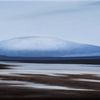
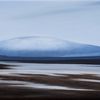
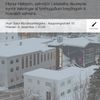
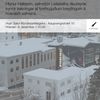
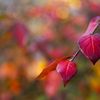
 Adda Laufey
Adda Laufey
 Anna
Anna
 Ásgeir Kristinn Lárusson
Ásgeir Kristinn Lárusson
 Bergur Thorberg
Bergur Thorberg
 Birgitta Jónsdóttir
Birgitta Jónsdóttir
 Brosveitan - Pétur Reynisson
Brosveitan - Pétur Reynisson
 DÓNAS
DÓNAS
 Elfar Logi Hannesson
Elfar Logi Hannesson
 Emma Agneta Björgvinsdóttir
Emma Agneta Björgvinsdóttir
 Eva G. S.
Eva G. S.
 Georg P Sveinbjörnsson
Georg P Sveinbjörnsson
 Goggi
Goggi
 Gunnlaugur Halldór Halldórsson
Gunnlaugur Halldór Halldórsson
 Hallmundur Kristinsson
Hallmundur Kristinsson
 Heidi Strand
Heidi Strand
 Helgi Vilberg
Helgi Vilberg
 Hlynur Hallsson
Hlynur Hallsson
 Hrafnhildur Ýr Vilbertsdóttir
Hrafnhildur Ýr Vilbertsdóttir
 Högni Snær Hauksson
Högni Snær Hauksson
 Ingólfur Ásgeir Jóhannesson
Ingólfur Ásgeir Jóhannesson
 Joris Rademaker
Joris Rademaker
 Jónas Viðar
Jónas Viðar
 Jón Þór Bjarnason
Jón Þór Bjarnason
 Karl Tómasson
Karl Tómasson
 Kristbergur O Pétursson
Kristbergur O Pétursson
 Kristín M. Jóhannsdóttir
Kristín M. Jóhannsdóttir
 Kristján Kristjánsson
Kristján Kristjánsson
 Kristján Logason
Kristján Logason
 Marinó Már Marinósson
Marinó Már Marinósson
 María Kristjánsdóttir
María Kristjánsdóttir
 Pálmi Gunnarsson
Pálmi Gunnarsson
 Ransu
Ransu
 Stefán Friðrik Stefánsson
Stefán Friðrik Stefánsson
 Steinunn Helga Sigurðardóttir
Steinunn Helga Sigurðardóttir
 Svanfríður Guðrún Gísladóttir
Svanfríður Guðrún Gísladóttir
 Svavar Alfreð Jónsson
Svavar Alfreð Jónsson
 Sveinn Ólafsson
Sveinn Ólafsson
 Vilborg Ólafsdóttir
Vilborg Ólafsdóttir
 Þór Saari
Þór Saari